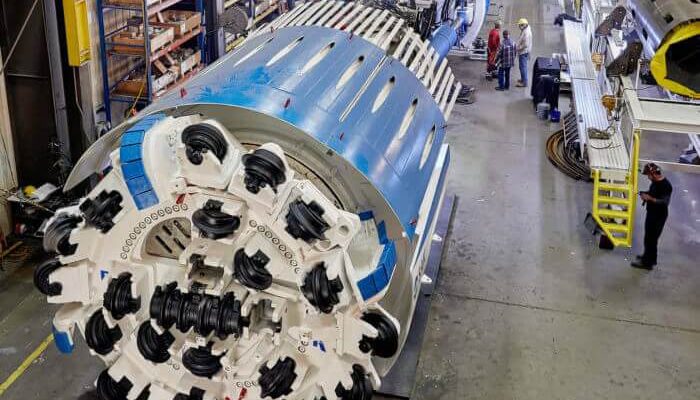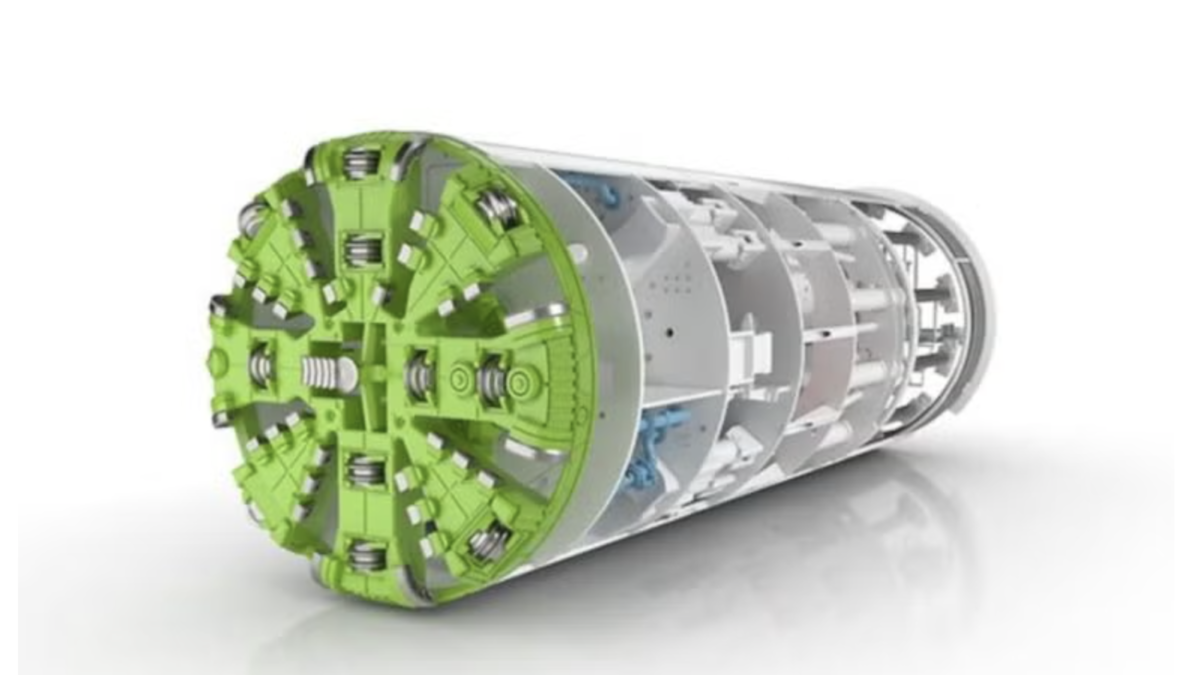
In spring 2022, a specific Robbins 4.1 m (13.5 ft.) width Main Beam TBM launched in St. Louis, Missouri, USA, to finish a critical infrastructure tunnel for constructor SAK Construction. The machine, named “Mrs. Vera”, is excavating Phase 2 of the Jefferson Barracks tunnel, a 3,050 m (10,000 ft.) long tunnel in karstic limestone. Designed to distinguish karst and other underground elements, the interesting machine comes furnished with improved 360-degree probe drilling capacities, as well as flexible ground support choices including McNally crown support, wire mesh, ring beam erector, and rooftop drills.
“The general plan of the machine is ideal for our project, for the mining aspect as well as for the ability to run two probe drills in numerous areas around the TBM,” said Brotherman Bragg, Project Superintendent for SAK Construction. “The difficulties I anticipate during tunneling are generally connected with ground conditions. The region that we are tunneling in has a potential for karst features. The probe drill is our lifeline and with the two probe drills on the machine, I accept that we will figure out what’s in front of us before we arrive, enabling us to deal with possible issues.”
During Phase 1 of Jefferson Barracks, a reconstructed 3.35 m (11.0 ft.) width Robbins Main Beam TBM hit challenging conditions around 2,400 m (7,900 ft.) into tunneling. The machine experienced an enormous vertical component alongside flowing and unstable ground that expected the TBM to stay in place. While different choices including ground freezing were thought of, they were eventually considered infeasible.
A 62 m (205 ft) deep recovery shaft and 60 m (200 ft) long adit were built to stabilize the area and eliminate the machine in what might be a serious and eventually effective undertaking. After recuperation of the machine, SAK Construction went to Robbins for an answer to bore the remaining tunnel in what might become Phase 2 of the project.
SAK and Robbins consented to do extensive in-shop testing of the new, larger TBM to guarantee there would be no unnecessary delay on location. The TBM was delivered eventually several months late due to both COVID-related matters and the extra in-shop testing. SAK operational staff and Robbins personnel were largely engaged with final assembly and testing systems.
After arriving in St. Louis, the TBM was quickly assembled and launched from the recovery shaft.
“The Robbins Field Service specialists have been great in their help, assisting us with assembling the machine, and investigating the machine. Our difficulties during the assembly and launch from the shaft were negligible – this is the quickest and most proficient assembly we’ve had on a machine. We assembled the TBM in four weeks, which was an immense obstacle,” said Bragg.
“The overall design [of the TBM] is extremely practical and hitherto in the beginning phases it is by all accounts mining quite well,” continued Bragg. “Up to this point, I’m extremely satisfied with the machine and with the professionals.” Early signs were great, with the machine advancing 21 m (70 ft) in its initial two shifts after launch.
The Jefferson Barracks project is a vital part of MSD Project Clear, a massive US $6 billion program attempted by the Metropolitan St. Louis Water District to target water quality and wastewater worries in the city and surrounding regions. The 5,400 m (17,800 ft) long, 2 m (7 ft) interior diameter Jefferson Barracks tunnel runs parallel with the Mississippi River and reaches out to the Lemay Wastewater Treatment Plant situated at the intersection of the River des Peres and the Mississippi. The tunnel is scheduled to finish in autumn 2023. For additional data on Robbins kindly visit their website.
















